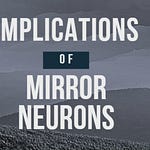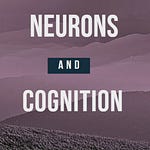Continuing our exploration of metacognitive learning from ancient caves to modern classrooms, we now examine a fundamental question: Why is so much effective teaching rooted in conversation? The answer lies in understanding how the evolution of metacognition drove the development of human communication itself.
The Metacognitive Imperative
Human communication didn't evolve merely to share information. It evolved to share thinking about thinking. While other species can signal danger, location, or intention, humans developed the unique ability to communicate about mental states, reasoning processes, and the quality of knowledge itself. This metacommunicative capacity fundamentally transformed how we learn and teach.
Consider the difference between "There's a predator nearby" and "I think there might be a predator nearby, but I'm not certain… What do you think?" The second statement doesn't just convey information; it communicates the speaker's confidence level, invites collaborative evaluation, and opens space for metacognitive dialogue. This represents a quantum leap in communicative sophistication that only became possible with advanced metacognitive abilities.
From Inner Speech to Outer Dialogue
The relationship between metacognition and communication runs deeper than functional necessity—it reflects the very architecture of human consciousness. Our capacity for inner speech, that ongoing internal dialogue where we monitor and regulate our thinking, provided the template for external communication about mental processes.
When we engage in metacognitive reflection, we're essentially having a conversation with ourselves: "Am I understanding this correctly? What strategy should I try next? How confident am I in this conclusion?" This internal dialogue naturally extended outward, allowing us to invite others into our thinking processes and benefit from their metacognitive perspectives.
The Socratic Revolution
Long before we understood the science of metacognition, ancient teachers like Socrates intuited its power. The Socratic method doesn't primarily transmit information. Instead, it guides learners through metacognitive reflection. Questions like "How do you know that?" and "What assumptions are you making?" explicitly target metacognitive awareness rather than factual recall.
This conversational approach to learning works because it mirrors our natural metacognitive processes. When a teacher asks "What do you think about your answer?" they're externalizing the kind of self-monitoring that effective learners do internally. The dialogue becomes a scaffold for developing metacognitive skills that students can eventually internalize.
The Collaborative Metacognitive System
Human communication about thinking created something unprecedented in the natural world: a collaborative metacognitive system where multiple minds could work together to monitor, evaluate, and regulate cognitive processes. This wasn't just helpful-it was transformative.
Consider how mathematical proofs developed through scholarly dialogue, where one mathematician would present reasoning, another would identify potential flaws, and the community would collectively refine the logic. This process mirrors metacognitive monitoring and control, but distributed across multiple minds rather than confined to individual cognition.
Why Conversation Beats Lecture
Modern educational research consistently shows that dialogic teaching, instruction rooted in meaningful conversation, produces better learning outcomes than traditional lecture formats. The metacognitive evolution of communication explains why.
Conversations naturally involve metacommunicative elements: clarification requests ("Do you mean...?"), confidence indicators ("I'm fairly sure that..."), and strategy discussions ("Maybe we should approach this differently..."). These elements engage learners' metacognitive systems in ways that passive information reception cannot.
When students explain their thinking to others, they must make their mental processes explicit, which strengthens metacognitive awareness. When they respond to questions about their reasoning, they practice metacognitive monitoring. When they adjust their approach based on feedback, they develop metacognitive control.
The Neuroscience of Conversational Learning
Recent neuroscientific research reveals that conversation activates brain networks associated with both language processing and metacognitive control. During meaningful dialogue about learning, regions like the prefrontal cortex, crucial for metacognitive functions, show heightened activity.
This neural evidence supports what teachers have long observed: students learn better when they can talk through problems, explain their reasoning, and engage in back-and-forth dialogue about concepts. The brain systems that evolved to support metacognitive communication are still the most effective pathways for deep learning.
From Campfire to Classroom
The evolutionary link between metacognition and communication helps explain why effective teaching across cultures and throughout history shares certain conversational features. Whether in Indigenous storytelling circles, medieval university disputations, or modern peer learning groups, the most powerful educational experiences involve guided dialogue about thinking processes.
These conversational traditions aren't cultural accidents. They are expressions of our evolved cognitive architecture. Just as our ancestors around those fires at Lascaux developed visual narratives to support learning, they also developed conversational patterns that leveraged our natural metacognitive abilities.
The Digital Dialogue
Understanding the metacognitive roots of human communication has profound implications for modern education. As we develop digital learning environments, the most successful platforms aren't those that simply deliver information more efficiently. They are those that recreate the conversational dynamics that support metacognitive learning.
Effective online learning tools incorporate features like discussion forums, peer review processes, and AI tutoring systems that engage students in dialogue about their thinking. These tools succeed because they align with our evolved capacity for metacommunicative learning.
The Future of Conversational Learning
As we look toward the future of education, the metacognitive foundations of human communication suggest that the most transformative innovations won't replace conversation, they will enhance it. Virtual reality classrooms, AI learning companions, and collaborative digital environments all represent attempts to recreate and amplify the conversational dynamics that make learning most effective.
The key insight from our evolutionary perspective is that conversation isn't just a teaching method. It is the natural expression of how humans evolved to share, develop, and refine knowledge. When we engage in meaningful dialogue about learning, we're not just using a pedagogical technique; we're participating in the fundamental process that made us human.
The Endless Conversation
Perhaps the most profound implication of understanding the metacognitive roots of communication is recognizing that learning itself is conversational—not just between teacher and student, but between past and present knowledge, between different ways of thinking, and ultimately between our current understanding and our evolving consciousness.
Every time we pause to ask "Does this make sense?" or "How confident am I in this conclusion?" we're continuing the great conversation that began when our ancestors first developed the ability to think about thinking and share those thoughts with others. The metacognitive capacity that drove the evolution of human communication continues to drive our individual and collective learning today.
In recognizing this deep connection between metacognition and conversation, we gain not just insight into effective teaching methods, but appreciation for the profound evolutionary achievement that makes learning through dialogue possible. We are the species that learned to think together, and in that collaborative thinking lies much of our power to understand and transform our world.
Purchase the book here: https://link.springer.com/book/10.1007/978-3-031-41436-7
Reference:
Harrison, S., & Thomas, L. (1991). Learning conversations: The self-organized way to personal and organizational growth. https://www.amazon.co.uk/Learning.../dp/B00H9KFK5Y Purchase the book here: https://link.springer.com/book/10.1007/978-3-031-41436-7











